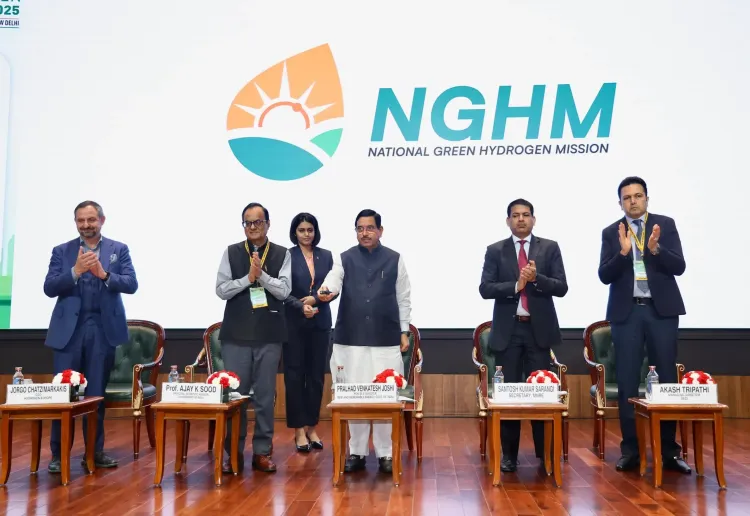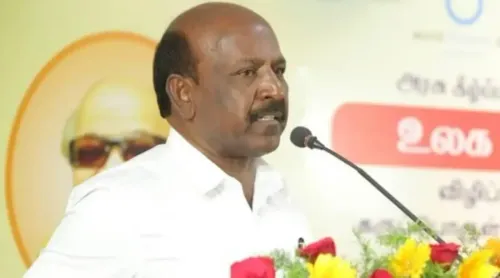What is the Rs 100 crore scheme for biomass-based hydrogen pilot projects announced by Pralhad Joshi?

Synopsis
Key Takeaways
- Rs 100 crore allocated for green hydrogen pilot projects.
- Implemented through BIRAC for industry and research collaboration.
- NGHM aims to position India as a global leader in green hydrogen.
- India’s non-fossil capacity exceeds 250 GW.
- Targeting 500 GW renewable capacity by 2030.
New Delhi, Nov 11 (NationPress) The government has unveiled a Rs 100 crore initiative aimed at soliciting proposals for pilot projects focused on pioneering technologies to create green hydrogen from biomass and waste materials.
This initiative will be executed through BIRAC (Biotechnology Industry Research Assistance Council), fostering collaboration among industries, start-ups, and research institutions.
The Union Minister for New and Renewable Energy, Pralhad Joshi, highlighted that the National Green Hydrogen Mission (NGHM) is propelling India’s transition towards clean energy, generating employment, attracting investments, and establishing the nation as a global center for green hydrogen.
During his address at the inaugural session of the 3rd International Conference on Green Hydrogen (ICGH 2025) held at Bharat Mandapam, he reiterated India’s commitment to leading the global clean-energy transition.
On this occasion, the minister introduced the official logo for the NGHM. This new logo, selected from over 2,500 submissions across the country, symbolizes public participation in India’s green journey and the collective creativity that drives the Mission.
Minister Joshi pointed out that the NGHM, initiated in 2023 with a budget of Rs 19,744 crore, represents not only a national program but also a global strategy to decarbonize challenging sectors. He noted that the launch of the NGHM signifies a new chapter in India’s clean-energy revolution, where green hydrogen is envisioned as the fuel of a new civilization, critical for long-term energy independence.
He emphasized the swift advancements made under the Strategic Interventions for Green Hydrogen Transition (SIGHT) program, revealing that incentives have been allocated for producing 3,000 MW of domestic electrolyser manufacturing and 8.62 lakh metric tonnes of green hydrogen annually. India has achieved the world’s lowest green ammonia price at Rs 49.75 per kg for a production capacity of 7.24 lakh MTPA.
Additionally, Rs 132 crore has been directed towards five pilot projects aimed at green steel, Rs 208 crore sanctioned for 37 hydrogen-fueled vehicles and nine refueling stations, as well as Rs 35 crore allocated for the nation’s first hydrogen bunkering and refueling facility at V.O. Chidambaranar Port.
Santosh Kumar Sarangi, Secretary of MNRE, remarked that India’s non-fossil installed capacity has now surpassed 250 GW, including approximately 130 GW from solar, over 50 GW from wind, and 17 GW from bio-energy and small hydro.
Guided by the Prime Minister’s vision of “One Earth, One Family, One Future,” India is on track to attain 500 GW of renewable capacity by 2030.









